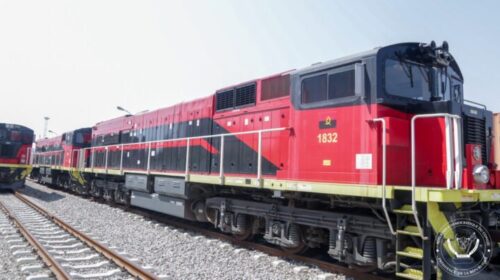Angola and Tanzania Challenge DRC’s Exclusive Copper Export Route
The exclusively Congolese route (river-rail) for copper exports, which had previously made SNCC and the former ONATRA the main partners of Gécamines, seems to be coming to an end.
The lucrative market is likely to be taken over by either Angola or Tanzania. Both of these countries have undeniable and essential involvement in the security matters of eastern Congo.
The plan was to modernize the Ubundu-Kisangani railway over 125 km so that SNCC could transport copper and related minerals.
First, the minerals would travel via the railway from the southern Haut-Katanga and Lualaba regions to Kindu, then by water from Kindu to Ubundu.
The Uelé-Fleuve Railways Company (SCFUF) was supposed to take over from Ubundu to Kisangani. Unfortunately, the rail gauge installed in the 1930s is only 0.6 meters, unsuitable for modern locomotives.
However, from Kisangani, the ITB Kokolo of SCTP ex-Onatra was supposed to carry the mining products to Matadi port, providing access to the high seas.
Today, the large ship has been transformed into a floating multipurpose hall, hosting events such as weddings and funeral gatherings.
Another route on the brink of bankruptcy is the South African route with the ports of Elizabeth and East London, which gained prominence in the late 1990s.
The South African influence on the DRC faded with the arrival of Félix-Antoine Tshisekedi, who openly aligned himself with Angola, mainly for the stability of his rule.
Luanda provides security, particularly regarding the expansionist ambitions of Paul Kagame’s Rwanda. However, Tanzania is also a regional power.
Its military intervention in 2013 was crucial in curbing the M23 rebellion. Tanzania also wields considerable influence within the East African Community (EAC), where troops are striving to create a no man’s land around Goma to prevent a bloody clash between the FARDC and the M23. But for how long?
Nonetheless, Dar es Salaam aims to profit from the copper overproduction in the landlocked Copperbelt region of Zambia and the Katanga region of the DRC.
On October 2, 2023, Zambian President Hakainde Hichilema and his Congolese counterpart Félix Tshisekedi laid the foundation stone for a bridge spanning the Luapula River.
This marks a significant step in building a road that will connect the DRC to Tanzania through Zambian territory. The road aims to reduce the travel time for Congolese and Zambian exports of copper and cobalt, two essential metals for the energy transition.
According to GED Africa, the company leading the project, the various infrastructures will reduce the distance by more than 240 km compared to the current route.
The Mauritius-based company states that it will require a $850 million investment for a three-year construction project. GED Africa plans to contribute 30% of the equity capital and mobilize the remainder in the form of loans from the Trade and Development Bank (TDB), a significant development bank active in East and South Africa, and the African Finance Corporation.
Last year, the DRC became the world’s third-largest copper producer, with 2.3 million tons compared to 1.8 million tons in 2021. Zambia aims to produce 3 million tons of copper annually over the next decade, up from less than a million tons in recent years.
The port of Dar es Salaam, where bags of Congolese copper salts arrive for China, was actually built with funds from the DRC during the colonial era.
The port remained Congolese at independence and was only nationalized by Tanzanian President Julius Nyerere in 1971. When Carole Agito, the former Director-General of SONAS, and head of the National Association of State Enterprises (ANEP), was in charge, she dug up the issue, demanding compensation from Tanzania for Gécamines, whose funds were used to build the Tanzanian port.
However, Ms. Agito, who is now a strong supporter of Tshisekedi, did not receive much government support, and the issue remains unresolved.
While Luanda is pressing Kinshasa to modernize its railway network, connecting Lualaba to the Angolan network that leads to the port of Lobito, there are reports that European and American funds have been mobilized to revitalize the Lobito corridor, a railway linking Zambia and the DRC to international markets through the port of Lobito in Angola. Western involvement in this matter escalates the conflict of interests beyond the region.
Guy de Keyser, manager of the firm COGEDEV, which was tasked with conducting a study on the DRC’s foreign trade during the 1+4 government, once stated, “Don’t be mistaken, the West will never leave the DRC at the mercy of the Chinese.”
Yet, Félix Tshisekedi had recommended that the Congolese side, in negotiations with the Chinese over the state’s stake in Sicomines, should not jeopardize the longstanding Sino-Congolese friendship. Only time will tell.
96 total views , 1 views today





